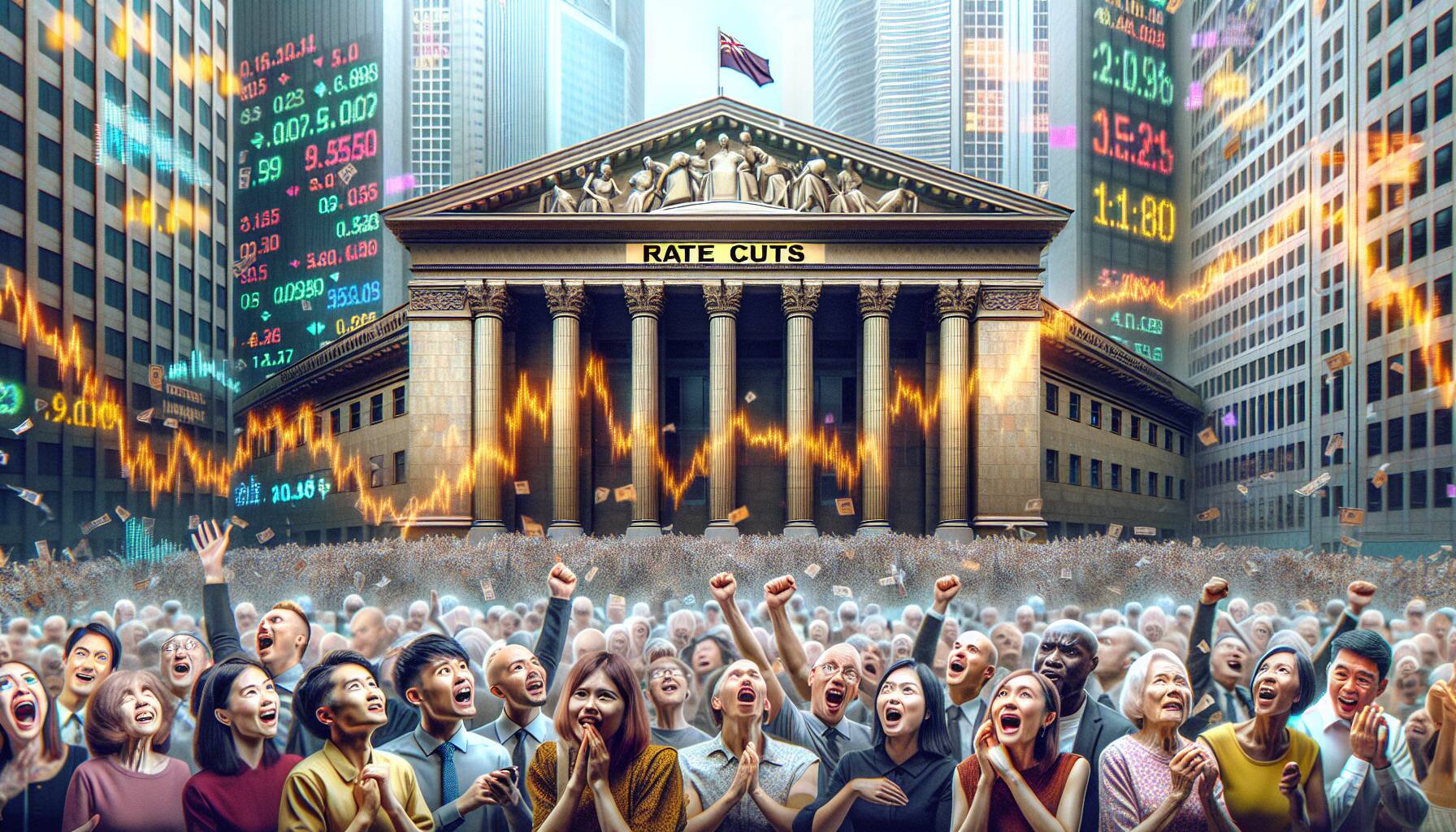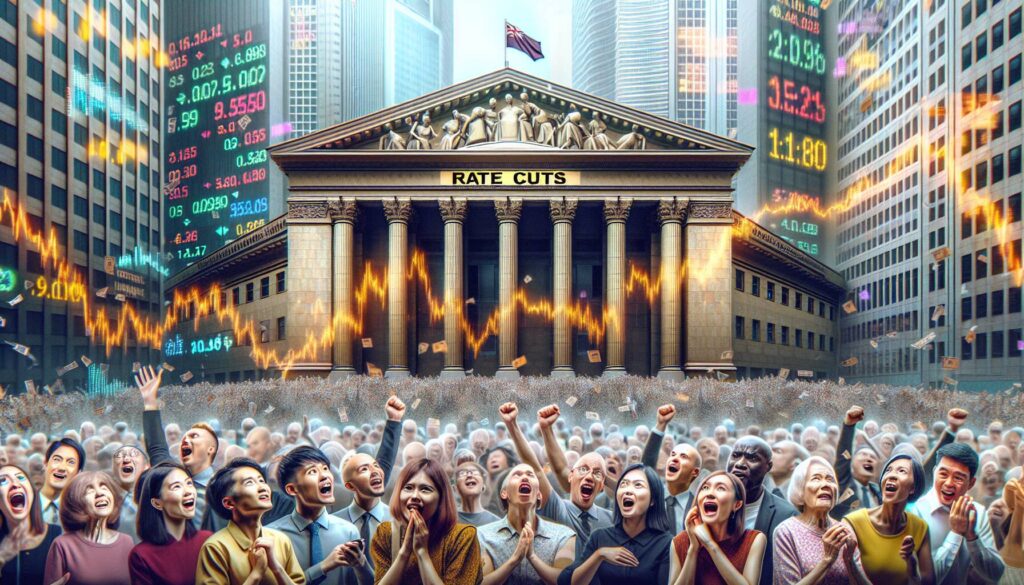The cryptocurrency market is buzzing with anticipation as the U.S. Federal Reserve hints at possible rate cuts, leading to mixed sentiments among traders and investors alike. Last Friday, Fed Chair Jerome Powell addressed the critical topic during his speech at Jackson Hole, suggesting that the current economic policies might be adjusted due to rising risks. His comment on acknowledging “downside risks to employment” has invigorated speculation about a rate cut in September, which has since propelled prices of major cryptocurrencies like Bitcoin and Ether upward.
However, the context in which these potential cuts may occur is complex. Record-high fiscal spending, elevated stock and crypto valuations, and a significant increase in the global money supply complicate the narrative, raising questions about the efficacy of cheaper borrowing costs. Experts from the LondonCryptoClub suggest that while rate cuts could impact the markets incrementally, there are bigger forces at play, including global monetary easing and an increase in fiscal policies worldwide…
The U.S. economy is often described metaphorically as being “on steroids,” with relentless fiscal and monetary policies that have continued since the COVID-19 pandemic. This aggressive economic strategy has raised concerns about long-term consequences, suggesting that just as prolonged steroid use can lead to resistance and negative side effects in athletes, the same might happen in the economy. Economists warn that the continued reliance on such measures risks diminishing returns, where the potential benefits might no longer outweigh the economic side effects.
The analogy draws a vivid picture: the U.S. economy, reliant on multiple stimulant strategies, could be approaching a point of saturation — raising the question, at what cost is this aggressive fiscal stance being sustained?
The looming prospect of Fed rate cuts adds a layer of intrigue to an already complex financial landscape, prompting traders to keenly watch for market reactions amidst ongoing discussions about the sustainability of these economic “steroids.”

Federal Reserve Rate Cuts and Their Implications
The following key points summarize the impact of potential Federal Reserve rate cuts and the broader implications for the economy and markets:
- Support for Rate Cuts: Fed Chair Jerome Powell’s remarks suggest a possibility for rate cuts in September, heightening market speculation.
- Record Economic Indicators: High fiscal spending, stock, and crypto valuations combined with a significant money supply raise concerns about economic stability.
- Debt Issuance Strategies: The U.S. Treasury’s approach to short-term securities aims to keep interest rates low, which may lead to unintended consequences in the long term.
- Comparison to Steroid Use: Economists liken fiscal and monetary policy to steroids, offering temporary boosts to the economy but risking harmful side effects over time.
- Potential for Diminishing Returns: Continued stimulus could lead to reduced effectiveness, where the costs of inflation and debt outweigh economic benefits.
- Market Reactions: Traders should be cautious as financial markets could experience significant volatility in response to these economic conditions.
“The combination of ongoing fiscal stimulus and potential rate cuts may create more instability than growth in financial markets.”
Market Reactions to Potential Federal Reserve Rate Cuts
The recent discussions surrounding potential Federal Reserve rate cuts have ignited a flurry of activity within financial markets, drawing attention similar to other significant economic announcements. A noteworthy competitive advantage in this context is the heightened interest from traders, who seem increasingly alert to price dips and potential sell-offs. As seen after Chair Jerome Powell’s remarks at Jackson Hole, markets exhibited a robust response, elevating asset prices like bitcoin and ether. This upward trend reflects the speculative nature of trading, where investors often react swiftly to news, amplifying short-term gains as they anticipate and capitalize on market movements.
However, the flip side to this anticipation lies in the concerns about the sustainability of economic growth fueled by what can be deemed ‘fiscal steroids.’ As various economists have pointed out, such reliance on monetary stimulus can potentially lead to diminishing returns over time. Unlike singular bursts of growth seen post-COVID, the relentless injection of liquidity raises questions about long-term viability. This presents a disadvantage for investors who may be riding high on current market optimism yet face a looming risk: the possibility of a downturn as market corrections take hold, much like a bodybuilder facing the negative repercussions of prolonged steroid use.
Those who stand to benefit from the current climate include day traders and short-term investors looking for immediate profits amidst market volatility. The speculative nature of such an environment often affords them opportunities. Conversely, longer-term investors may find themselves in a precarious situation, grappling with inflated asset prices and uncertain economic fundamentals. Additionally, companies heavily reliant on low-interest borrowing for expansion might face a squeeze as interest rate adjustments take effect, complicating their financial strategies.
In summary, while the chatter around rate cuts stirs excitement in some sectors, it also highlights critical economic vulnerabilities that can create challenges for different market players. Who thrives and who falters amid these fluctuations remains a dynamic question, one that demands careful navigation in an increasingly intricate financial landscape.
















